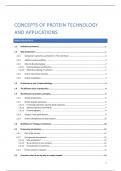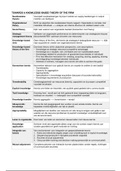Samenvatting
Summary Concepts of Protein Technology and Applications (14/20)
- Vak
- Instelling
This document serves as a comprehensive summary combining the key insights from the presentations of Professors Xaveer van Ostade and Kurt Boonen. The summary consists of their slides, enriched with my personal notes.
[Meer zien]





